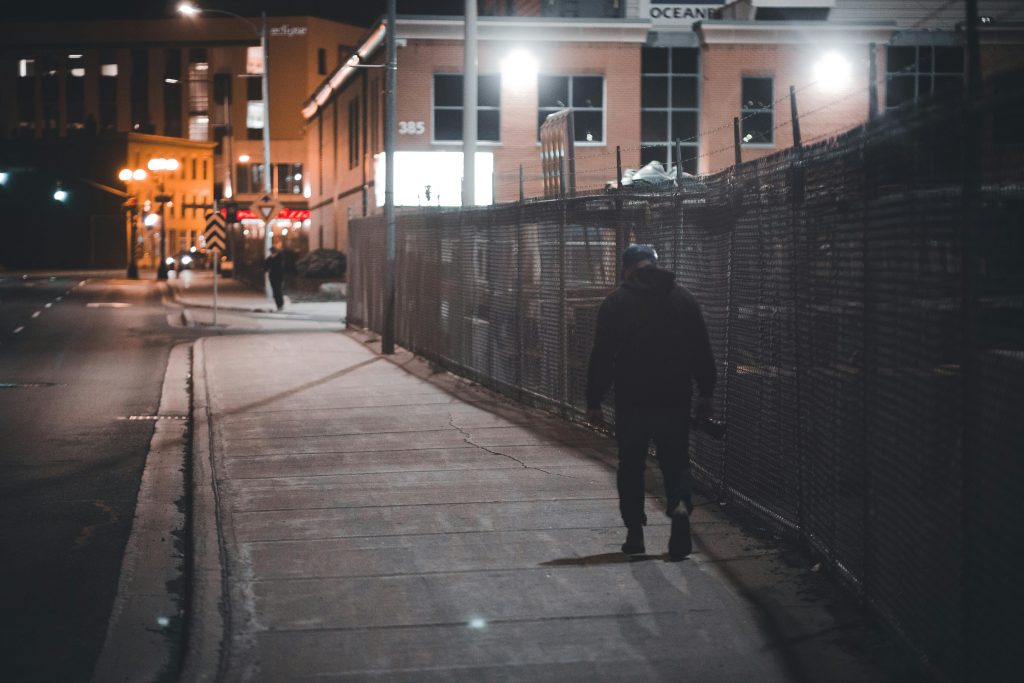Walking alone at night should be an uneventful experience. Yet, for many women, it remains a constant balancing act between freedom and fear. Exchange students coming to the Netherlands, particularly to Zwolle, bring diverse perspectives on this issue—some finding the situation better than in their home countries, while others feel just as vulnerable. A recent survey conducted among international students at a Dutch university sheds light on their experiences, revealing persistent concerns about safety, catcalling, and necessary precautions.
The Reality of Walking Alone at Night
To better understand how this issue affects international students, we conducted a survey among exchange students at Windesheim University in Zwolle. The survey gathered 12 responses, capturing personal experiences, concerns, and comparisons to their home countries.
The findings of our student survey align with this broader trend. Many female exchange students reported feeling unsafe when walking alone at night, with responses ranging from “often” to “always.” Some shared personal stories of harassment, including being catcalled by middle-aged men or even being followed. While experiences varied, the general consensus remained clear: walking alone at night is rarely a carefree experience.
The strangest experience was in broad daylight in a bus a young guy followed me after getting of the bus very closely for about 20 minutes and only left when I got into a shop
I work in a night club and after my shift I got off my bus home and it takes about 20 minutes to walk home. A man got off at the same stop and he walked up to me and asked if I wanted a kiss and I said no and quickly crossed the road even tho I’d have to walk for longer just to avoid him. Another time I was going home and got off the bus and didn’t think anyone got off with me then I felt someone hug me from behind and hump me I was in shock and when I turned around the boy ran away. Now I always look around and keep keys in my hands. I wear head phone but don’t play any music so I can hear around me
we were chased, inside my friends house, and they still wouldnt stop- this happened twice in the span of five months
According to a report by the European Union Agency for Fundamental Rights, 55% of women in the EU had experienced sexual harassment at some point, with public spaces being a major setting (European Union Agency for Fundamental Rights, 2014). Street harassment is not just an occasional inconvenience; for many women, it shapes their daily routines and influences their sense of security.
The Dutch government has taken steps to address street harassment, but reports suggest that many incidents still go unreported. A study by Plan International Netherlands found that 81% of young women in the Netherlands had experienced street harassment before the age of 25 (Plan International Netherlands, 2021). Despite progress in legal frameworks, the reality for many remains unchanged—verbal harassment and unwanted attention persist, particularly in urban areas.

How Women Adapt Their Behavior for Safety
Instead of simply walking home like their male peers, many women take specific precautions to feel safer at night. Survey participants listed various strategies: avoiding walking alone, calling or texting someone while on the way home, sticking to well-lit areas, and carrying self-defense tools such as pepper spray.
The necessity of these precautions raises an important question—why should women have to alter their behavior to feel safe? The cost of safety is also disproportionately placed on women. Many choose to spend extra money on Ubers, taxis, or public transportation late at night, not out of convenience, but out of necessity. A report by The Guardian highlighted this issue, emphasizing how women often pay for transport just to avoid the dangers of walking alone (The Guardian, 2022). This financial burden is rarely acknowledged, yet it is an unfair reality that many women must accept…
Is Zwolle Any Safer?
One of the most interesting aspects of the survey was how exchange students compared Zwolle to their home countries. Some reported feeling safer, citing lower crime rates and well-lit streets, while others felt the same level of unease as they did back home. According to Safety Index data, the Netherlands ranks among the safest countries globally, yet many women still feel vulnerable (Safety Index Data, 2022).
It happens to me some of the times i go out at night in my hometown (italy).
Public spaces such as parks, isolated streets, and bus stops were frequently mentioned as locations where students felt the most unsafe. A report by the Dutch Central Bureau of Statistics (CBS) noted that while overall crime rates in the Netherlands have dropped, reports of sexual harassment and intimidation remain concerningly high (Dutch Central Bureau of Statistics, 2021).

What Needs to Change?
- The issue of women’s safety at night goes beyond individual experiences—it’s a societal problem that requires collective action. Stricter policies against street harassment, better lighting in public spaces, and awareness campaigns can all contribute to making cities safer for women. More importantly, changing the cultural mindset around catcalling and harassment is essential.
- Governments and institutions are beginning to acknowledge this problem. In 2023, Amsterdam introduced stricter fines for street harassment, following campaigns by advocacy groups pushing for safer public spaces (Amsterdam Municipality, 2023). However, laws alone cannot change behavior—education and societal awareness must follow.
To better understand the impact of street harassment and the steps needed to combat it, watch Emily May, co-founder of Hollaback, discuss initiatives that are driving real change:
Immersion: Hearing the Experience Firsthand
To truly understand the struggles women face when walking alone at night, this project includes a 360° audio experience that places listeners in a real-life scenario of street harassment. Inspired by testimonies from exchange students, the audio recreates what it feels like to be catcalled, followed, or feel unsafe in public spaces.
By using immersive sound design, the experience allows listeners to step into the shoes of those who navigate these situations daily. The goal is to make the issue impossible to ignore—to bring awareness to a reality that many women face but that others might not fully grasp.





